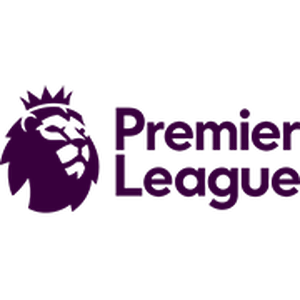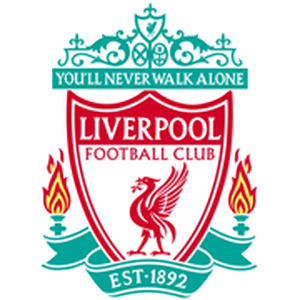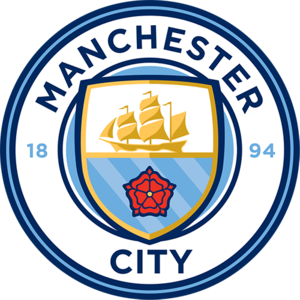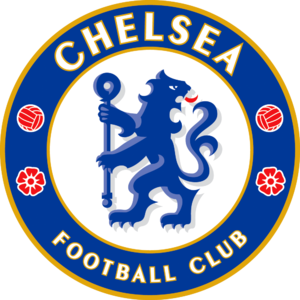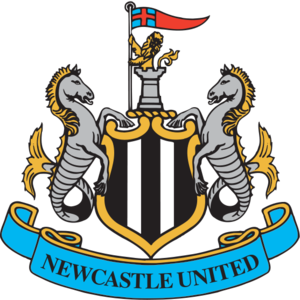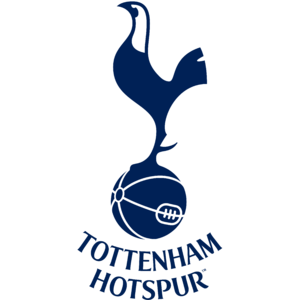North London Derby : Arsenal vs. Tottenham Rivalry
Mar 02, 2025 by
Transferhunt News
• 8 minute read
The North London Derby between Arsenal and Tottenham is a fierce rivalry rooted in history, passion, and culture, dividing fans and shaping history

The North London Derby between Arsenal and Tottenham Hotspur stands as one of football's most passionate and storied rivalries. As highlighted in our Complete Guide to London Football Clubs, this fixture transcends mere sport to become a cultural phenomenon that divides North London into distinct red and white territories, igniting fierce debates in pubs, workplaces, and households across the capital.
Origins of the North London Rivalry
The seeds of animosity were planted in 1913 when Arsenal, then based in Woolwich (South London), made the controversial decision to relocate to Highbury in North London—just four miles from Tottenham's White Hart Lane stadium. This territorial incursion into what Spurs supporters considered their domain sparked immediate tension.
The rivalry intensified in 1919 when Arsenal were promoted to the First Division at Tottenham's expense through a vote rather than on sporting merit, following the league's expansion after World War I. Many Spurs supporters still reference this historical grievance as the foundation of their resentment toward their neighbors.
Before every Tottenham vs Arsenal match, North London transforms as rival fan groups stake their claims to territory. Red and white flags adorn the Holloway Road near Arsenal's territory, while Tottenham High Road becomes a sea of navy blue and white. Local businesses experience a matchday boom as tens of thousands of supporters converge on North London.
Historic Moments That Defined the Rivalry
The Title Deciders
The North London Derby has produced numerous moments of ecstasy and agony for supporters. Perhaps the most painful for Tottenham fans occurred in 1971 when Arsenal secured the league title at White Hart Lane with a 1-0 victory, Ray Kennedy scoring the decisive goal. History repeated itself in 2004 when Arsenal's "Invincibles" clinched the Premier League title on Spurs' turf with a 2-2 draw, celebrating on their rivals' hallowed ground.
Tottenham exacted some revenge in 2010 with a dramatic 2-1 victory that effectively ended Arsenal's title hopes while boosting their own Champions League qualification ambitions. Danny Rose's spectacular volley on his debut remains etched in Spurs folklore from that encounter.
Memorable Matches
The fixture has delivered some of English football's most dramatic encounters:
- The 5-0 Demolition (1983) - Tottenham's largest victory in the fixture, with goals from Alan Brazil, Mark Falco, and Garth Crooks humiliating their rivals.
- The 4-4 Thriller (2008) - Arsenal led 4-2 with minutes remaining before late goals from Jermaine Jenas and Aaron Lennon secured an improbable draw for Spurs.
- Arsenal's 5-2 Comebacks - Remarkably, Arsenal overcame 2-0 deficits to win 5-2 in consecutive seasons (2011-12 and 2012-13), with Theo Walcott tormenting the Spurs defense on both occasions.
- The Nine-Goal Spectacle (2004) - Arsenal emerged 5-4 victors in one of the highest-scoring derbies ever, featuring goals from Noureddine Naybet, Jermain Defoe, Freddie Ljungberg, and Thierry Henry.
St. Totteringham's Day vs. Power Shift Narratives
Arsenal supporters created "St. Totteringham's Day"—the moment when Tottenham could mathematically no longer finish above them in the league table. This celebration became an annual tradition during Arsenal's dominance, occurring for 22 consecutive seasons until 2017, when Mauricio Pochettino's Spurs finally broke the streak.
The completion of Tottenham's stunning new stadium, coupled with Champions League qualification and a title challenge in 2016-17, led to discussions of a potential "power shift" in North London. Arsenal supporters vehemently reject this notion, pointing to their historical trophy haul and recent FA Cup successes, while Spurs fans highlight their stadium and consistent top-four finishes as evidence of changing fortunes.
Tactical Evolution Through the Decades
The tactical approaches in the North London Derby reflect broader trends in English football's evolution. During the 1960s and 70s, Bill Nicholson's Tottenham teams emphasized technical skill, while Arsenal under Bertie Mee focused on defensive solidity and physical prowess.
The arrival of Arsène Wenger in 1996 revolutionized the fixture as his Arsenal teams introduced a continental playing style that prioritized possession and technical excellence. This often contrasted with Tottenham's more traditionally English approach under managers like George Graham (ironically a former Arsenal legend).
Notable Tottenham vs Arsenal f.c. Lineups Through History
The derby has showcased some of football's greatest talents across generations:
The 1970s Classic Encounter
- Arsenal: Pat Jennings, Liam Brady, Charlie George, Alan Ball
- Tottenham: Martin Chivers, Alan Gilzean, Steve Perryman, Pat Jennings (who later moved to Arsenal)
The 1991 FA Cup Semi-Final
- Arsenal: David Seaman, Tony Adams, Paul Merson, Alan Smith
- Tottenham: Gary Lineker, Paul Gascoigne, Gary Mabbutt, Erik Thorstvedt
The Invincibles Era (2004)
- Arsenal: Jens Lehmann, Patrick Vieira, Thierry Henry, Robert Pirès
- Tottenham: Paul Robinson, Robbie Keane, Jermain Defoe, Ledley King
Modern Era Clash (2023)
- Arsenal: Aaron Ramsdale, Bukayo Saka, Martin Ødegaard, Gabriel Jesus
- Tottenham: Guglielmo Vicario, Son Heung-min, James Maddison, Cristian Romero
Managers Who Shaped the Derby
Certain managers have left indelible marks on this fixture:
Arsène Wenger (Arsenal, 1996-2018)
The Frenchman revolutionized Arsenal and dominated the derby for much of his tenure. His record against Tottenham was impressive, winning 23, drawing 13, and losing just 10 of his 46 North London Derbies.
Mauricio Pochettino (Tottenham, 2014-2019)
The Argentine transformed Spurs into consistent Champions League qualifiers and challenged Arsenal's North London supremacy. Under his guidance, Tottenham finally began to regularly compete with and occasionally outperform their rivals.
George Graham (Both clubs)
Uniquely, Graham managed both sides of the divide, winning the league with Arsenal before later taking charge at Tottenham—a move many Arsenal fans viewed as betrayal.
Current Tactical Battle: Arteta vs. Postecoglou
The present-day rivalry features Mikel Arteta's structured, positional approach against Ange Postecoglou's more fluid, attack-minded philosophy—creating a fascinating tactical chess match.
Fan Culture and Derby Day Experience
The North London Derby creates a unique atmosphere that ripples throughout the city. The Metropolitan Police classify it as a "Category A" fixture, requiring additional security measures. Local pubs strictly enforce "home fans only" policies, with establishments near the Emirates catering exclusively to Arsenal supporters, while those around Tottenham's stadium welcome only Spurs fans.
Families report dividing their homes into "red" and "white" zones on derby day. Local schools often experience increased tensions among students, with many scheduling special activities to channel the rivalry positively.
London resident Mark Thompson describes the experience: "I've supported Arsenal for three decades, and my brother-in-law is Spurs through and through. During derby week, we can't even exchange text messages without it turning into football debate. On matchday itself, we watch in separate locations—it's the only way to preserve family harmony."
Stadium Evolution and Matchday Experience
The setting for this historic rivalry has evolved significantly over the decades:
White Hart Lane vs. Highbury Era (1913-2006)
For most of the 20th century, the derby alternated between these iconic but relatively modest stadiums, both known for their intimate atmospheres and proximity to the pitch.
Emirates Stadium (2006-present)
Arsenal's move to their 60,000-capacity home modernized the matchday experience but was initially criticized by traditionalists for lacking the atmosphere of Highbury.
Tottenham Hotspur Stadium (2019-present)
Spurs' state-of-the-art 62,850-seat venue has set new standards for stadium design, featuring the first dividing retractable pitch for NFL games, a microbrewery, and the longest bar in Europe.
As referenced in our Complete guide to London Football Clubs, both modern venues represent architectural marvels that have transformed the matchday experience while preserving the intensity of this historic rivalry.
Media Coverage and Global Appeal
What was once a London-centric fixture now commands worldwide attention, with broadcasting rights sold to over 190 countries. The international profile of the Tottenham vs Arsenal match has grown exponentially, regularly attracting viewership figures exceeding 100 million globally.
The fixture's promotion and coverage now begin weeks before kickoff, with dedicated preview shows and documentary features exploring the rivalry's history. Social media engagement surges during derby week, with Twitter recording over 5 million derby-related posts during the most recent encounter.
Former players turned pundits like Ian Wright (Arsenal) and Glenn Hoddle (Tottenham) ensure passionate debate across sports networks whenever Tottenham vs Arsenal F.C. lineups are announced, adding further fuel to supporter discussions.
The Derby in Numbers
The statistical history of this fixture tells its own compelling story:
- First official meeting: September 4, 1909 (Arsenal won 1-0)
- Matches played (all competitions): 206 (as of October 2023)
- Arsenal wins: 83
- Tottenham wins: 66
- Draws: 57
- Highest attendance: 83,222 (Tottenham 0-1 Arsenal, February 10, 2018, at Wembley Stadium)
- Most appearances: David O'Leary (Arsenal, 35)
- Top scorer: Harry Kane (Tottenham, 14 goals)
- Most goals in a single match: 9 (Tottenham 4-5 Arsenal, November 13, 2004)
- Biggest margin of victory: Arsenal 6-0 Tottenham (March 6, 1935)
Looking Forward to April 2024
As the April 27, 2024 fixture approaches, anticipation builds throughout North London. Ticket demand will significantly exceed supply, with both clubs operating ballot systems for their allocations. Secondary market prices typically reach extraordinary levels, reflecting the fixture's importance to supporters.
The match could prove pivotal in determining European qualification positions, potentially influencing Champions League placement. For Arsenal, it might factor into title aspirations, while Tottenham could be seeking to disrupt their rivals' ambitions—a motivation that often elevates performances regardless of form.
For visitors to London hoping to experience the electric atmosphere of the Tottenham vs Arsenal derby, planning months in advance is essential. As our London Football Clubs Guide advises, securing tickets requires either club membership or specialized hospitality packages. Those unable to attend might consider experiencing the atmosphere in dedicated supporter pubs, though visitors should be mindful of strictly enforced fan segregation.
Cultural Impact Beyond Football
The North London Derby's influence extends beyond sport into London's cultural landscape. References appear in music, literature, and film, with both Nick Hornby's "Fever Pitch" and the subsequent film adaptation exploring the fixture's significance to Arsenal supporters.
Local businesses report revenue increases of up to 300% on derby weekends, with hospitality, transportation, and retail sectors all benefiting from the influx of supporters. The fixture's economic impact on North London is estimated at approximately £15 million per match.
More Than Just a Football Match
Whether you support the red or white half of North London, or simply appreciate authentic sporting culture, the North London Derby represents rivalry in its purest form. The fixture combines historical grievances, geographical proximity, and sporting excellence to create an occasion that transcends football.
Topics:






